Dipak Kumar Ghosh
FWLBP: A Scale Invariant Descriptor for Texture Classification
Aug 02, 2018

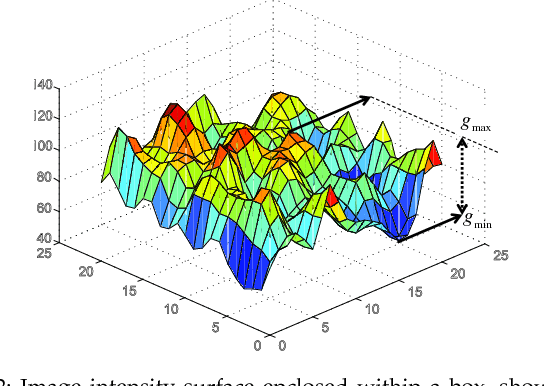
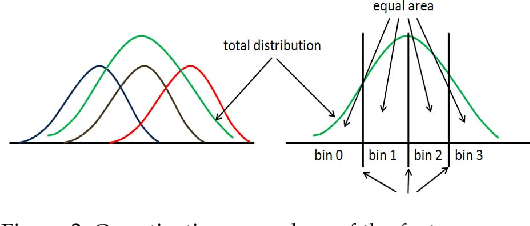
Abstract:In this paper we propose a novel texture descriptor called Fractal Weighted Local Binary Pattern (FWLBP). The fractal dimension (FD) measure is relatively invariant to scale-changes, and presents a good correlation with human viewpoint of surface roughness. We have utilized this property to construct a scale-invariant descriptor. Here, the input image is sampled using an augmented form of the local binary pattern (LBP) over three different radii, and then used an indexing operation to assign FD weights to the collected samples. The final histogram of the descriptor has its features calculated using LBP, and its weights computed from the FD image. The proposed descriptor is scale invariant, and is also robust in rotation or reflection, and partially tolerant to noise and illumination changes. In addition, the local fractal dimension is relatively insensitive to the bi-Lipschitz transformations, whereas its extension is adequate to precisely discriminate the fundamental of texture primitives. Experiment results carried out on standard texture databases show that the proposed descriptor achieved better classification rates compared to the state-of-the-art descriptors.
Local Jet Pattern: A Robust Descriptor for Texture Classification
Jul 08, 2018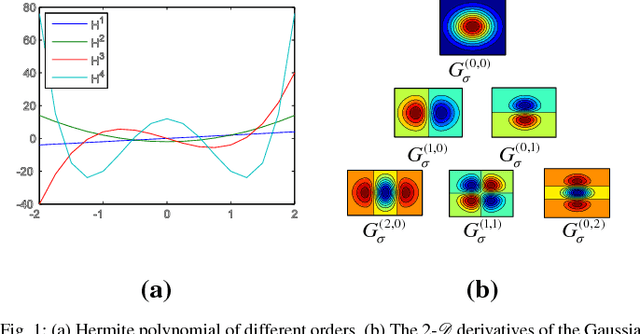
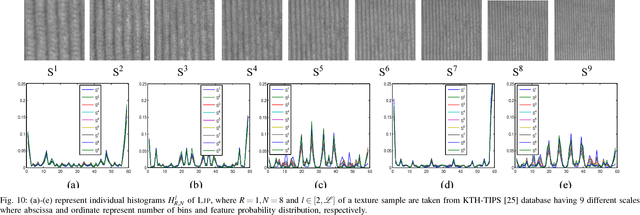
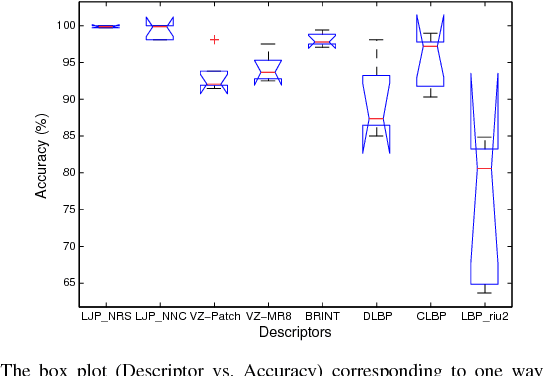
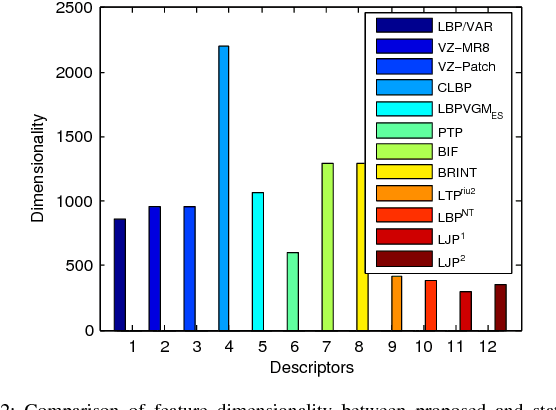
Abstract:Methods based on local image features have recently shown promise for texture classification tasks, especially in the presence of large intra-class variation due to illumination, scale, and viewpoint changes. Inspired by the theories of image structure analysis, this paper presents a simple, efficient, yet robust descriptor namely local jet pattern (LJP) for texture classification. In this approach, a jet space representation of a texture image is derived from a set of derivatives of Gaussian (DtGs) filter responses up to second order, so called local jet vectors (LJV), which also satisfy the Scale Space properties. The LJP is obtained by utilizing the relationship of center pixel with the local neighborhood information in jet space. Finally, the feature vector of a texture region is formed by concatenating the histogram of LJP for all elements of LJV. All DtGs responses up to second order together preserves the intrinsic local image structure, and achieves invariance to scale, rotation, and reflection. This allows us to develop a texture classification framework which is discriminative and robust. Extensive experiments on five standard texture image databases, employing nearest subspace classifier (NSC), the proposed descriptor achieves 100%, 99.92%, 99.75%, 99.16%, and 99.65% accuracy for Outex_TC-00010 (Outex_TC10), and Outex_TC-00012 (Outex_TC12), KTH-TIPS, Brodatz, CUReT, respectively, which are outperforms the state-of-the-art methods.
 Add to Chrome
Add to Chrome Add to Firefox
Add to Firefox Add to Edge
Add to Edge